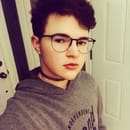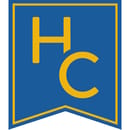Media companies (ahem, Disney) have been promising LGBTQ+ representation and instead gave us blink and you miss it cameos, deleted scenes and retroactive confirmation of the character’s sexuality in interviews.
The Promise of Representation
The 2017 live-action adaptation of the Beauty and the Beast had the character LeFou, Gaston’s sidekick, very briefly dance within another man at the end of the film. Director Bill Condon told Attitude magazine “LeFou is somebody who on one day wants to be Gaston and on another day wants to kiss Gaston… and Josh makes something really subtle and delicious out of it. And that’s what has its payoff at the end, which I don’t want to give away. But it is a nice, exclusively gay moment in a Disney movie.”
There is nothing exclusive about this moment. Not only does it take place during a scene celebrating a straight couple’s love and triumph, but it also lasts for barely a second.
Sure, there’s coding and LeFou wears a pink bow tie, but that is not representation. You can’t just have two men brush pinkies on screen and talk about how clever and inclusive your company is with their subtext. Subtext is not representation. Subtext is what people desperately wanting to see themselves in their media dig through to find representation.
A more recent instance is Avengers: Endgame which features, gasp, the first openly gay character in a Disney/Marvel movie! Who is this character? What amazing contribution do they make to the plot of the film? None. He is a man in a support group of people trying to process the grief of losing loved ones to the Thanos snap in Avengers: Infinity War. He talks about going on his first date after losing his male partner. That’s it. He doesn’t even show up again after that scene. Again, not representation.
That is acknowledging that gay people exist in the Marvel Cinematic Universe, but it doesn’t show them as meaningful or as contributors to the world. Which it should. Because queer people are actual members of society who have jobs and invent things. They don’t only exist during Pride and then disappear once Disney has sold all their rainbow Mickey ears.
Another example of Disney’s empty promise of representation is Love, Victor, a spin off series of the movie Love, Simon. When Disney purchased 20th Century Fox, the company gained the film rights to the book Simon vs. the Homo Sapiens Agenda, and given the success of the book’s movie adaptation in 2018, they saw an opportunity for profit. But rather than deliver on their promise, after hyping up the show’s queer rep and drawing a number year-long subscriptions to their streaming service, Disney moved the show from Disney+ to Hulu; a platform that is not nearly as popular and widely unavailable outside the United States.
Their reasoning?
Keeping it Family Friendly
Disney likes to be “family friendly” and apparently that means not acknowledging queer people. It seems Disney can’t help but hold on to the idea that queer people and relationships are overly sexual or dirty even when they are middle class, white and almost straight (no femininity here, just a crisp suburban lawn and Ben Shapiro hair).
Disney is a company and therefore its prerogative is to make money. We can all understand that. The House of Mouse doesn’t want to risk their profits by doing anything too uncouth or risk their “family friendly” branding. That’s fine. The problem is that they are trying to have it both ways.
They don’t want to upset their conservative audience too much so they keep the LGB rep short. Like, as short as possible. Only people who are obsessively looking will see it kind of short. This has the added benefit of being something easily removable for foreign distribution to countries like China or Russia that have a very clear disdain for “The Gays.”
But they also want to keep their queer audience engaged, so they hype up the representation in the film, or tell us that a character is bi or gay without ever showing the evidence on screen. Not only are they breaking the cardinal rule of filmmaking: show, don’t tell–but they are also taking advantage of a group of people who are foaming at the mouth for more positive, mainstream representation.
Disney’s Queer History
For a long time Disney has used the LGBTQ+ community for profit while giving nothing back. Dr. Paul Griffan interviewed multiple Disney employees for his 1998 dissertation “Tinker Belles and Evil Queens” and they asserted the company denied domestic partnership benefits to their queer employees. An estimated 40 per cent of Disney’s employees at the time were queer, including lyricist Howard Ashner who wrote the award winning soundtracks for The Little Mermaid, Beauty and the Beast, and Aladdin.
In 1991 Beauty and the Beast was the first animated film to ever be nominated for a Best Picture award. The film’s major competition for the award was The Silence of the Lambs which queer people were protesting at the time for it’s (still) offensive portrayal of psychopath Buffalo Bill. Disney saw an opening to win over the LGBTQ+ community and made a giant donation to the Aid for AIDS foundation. According to Dr. Griffin’s research, while on the surface the donation seems altruistic, it was nothing more than a PR stunt and the money came from Beauty and the Beast’s award campaign budget.
And there are many more examples within Griffin’s book and in the world today.
My Gay Rage™
Likely while reading this you have picked up on my rage. I hope you have. Because thinking of all the people who were too scared of being seen watching a gay movie in theaters, that were looking forward to watching Love, Victor on Disney+ in the safety of their homes, only to once again be told “you don’t belong here” makes me want to cry. Remembering all the people who protested and/or died during the AIDS epidemic that were treated as a marketing strategy makes me want to launch Mickey Mouse into the sun. I think back to every time I dug through subtext to find someone relatable in a movie or show only to be sneered at by others for trying to make everything gay and I feel alone.
Disney is unavoidable. Which is why they can afford to take a few risks. Just as the LGBTQ+ community and their allies can not avoid the company’s pull, neither can homophobes. In the end, we all value our entertainment and trying to steer completely clear of a media giant like Disney will likely leave us feeling lonely and bored. No matter what they do, people will still watch their movies, their shows, or maybe subscribe to their streaming service. Even people who get mad publicly will most likely privately watch the shows anyway. There is no reason for Disney to continue denying support to a community they have continuously profited from.
Until they finally follow through with their promise of representation, and stop editing the gay away, here are some movies and TV series that do it right: Sense8, SheRa, Grace and Frankie, Moonlight, Black Lightning, Crazy Ex-Girlfriend, Dear White People, One Day at a Time, Sex Education, But I’m a Cheerleader, and I guess… Love, Simon.



